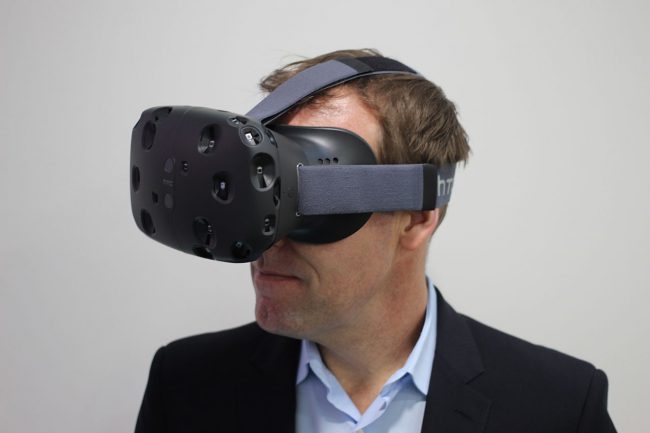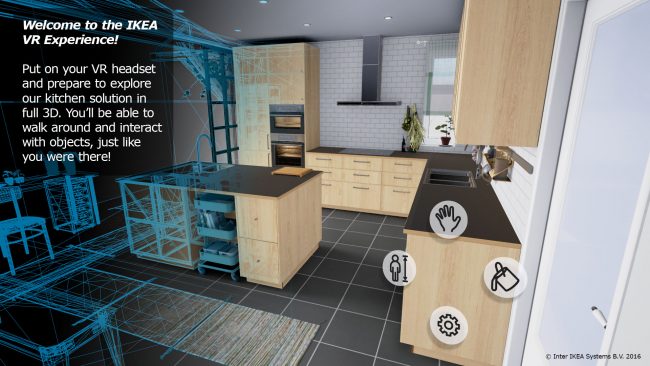While we may yet be an immeasurably long way off from the kind of technology demonstrated by Star Trek: The Next Generation’s enviable holodeck, there is no denying that virtual reality technology is quickly growing beyond its obvious entertainment potential. True, applications like gaming and virtual travel represent primary avenues for VR developers to explore, but this sci-fi-esque technology is undeniably positioning itself to be a game changer in the commercial world.
With a statistically significant proportion of purchases being transacted online (a trend that continues to grow exponentially year over year), virtual reality has risen to fill one of e-commerce’s most pervasive flaws, aiding remote shoppers to visualize what a product will look like on them or whether or not it will jive in their living space. But that’s just the tip of the iceberg.
Virtual Reality Beyond Gaming
Yes, it would be great to nerd out on the holodeck, discussing general relativity with Einstein or great works of fiction with Sir Arthur Conan Doyle. And while that may one day become possible, virtual reality is already having a transformative impact on the world we live in.
Online Shopping
IKEA, one of the world’s largest purveyors of value priced home furnishings, developed a virtual reality app for the HTC Vive (available on Steam) the purpose of which is to allow consumers to visualize, explore, and interact with the company’s plethora of kitchen solutions. Not only does it allow the user to change the colour of the walls, it also demonstrates how a new set of kitchen cabinets, cupboards, or appliances will transform the look and feel of the space. What’s more, users of the app can change the viewing perspective of the room – meaning you can experience what the space would look like to a toddler, helping to identify potential hazards.
Lowe’s, not to be outdone, partnered with Microsoft to launch Hololens, a hologram-viewing device that adds to the user’s reality, allowing them to place or design items right into their actual living space. Unlike other VR technology, Hololens doesn’t block out the user’s environment; instead, it works in it, allowing the user to view their home’s architectural model, useful for optimizing appliance placement and other modifications based on the locations of electrical and plumbing components.
Obviously, this sort of technology can have a huge impact on a homeowner’s buying or DIY decisions – especially for those whose visualization skills leave something to be desired.
Enhanced, Limitless Showrooms
When it comes to shopping for a new car, buyers have traditionally been limited to what is located on the showroom floor. As the second most costly purchase most people will make in their lifetime, it stands to reason that dealerships would be doing themselves a great disservice by not buying into virtual reality technology. Doing so would allow prospective buyers to see exactly what their vehicle will look like (something that is becoming increasingly important given the amount of options and customizability one has come to expect from automakers).
Thanks to GIRNAR SOFTWARE, parent company to CarDekho.com who developed a mobile cardboard VR tool exclusively for car and bicycle viewing, dealers no longer have to worry about the inability to display their entire inventory due to space constraints.
Curious what a 2016 Ford Mustang will look like with a tan leather interior? You may, in the not too distant future be able to stop by your local dealership and take a virtual tour of your dream ride.
Clothing Purchases, Both Online and Off
When it comes to shopping (whether online or in store), there is no greater point of frustration than clothing. Pants, dresses, skirts, shirts – no matter what it is, the way it looks on the rack does not necessarily translate to how it will fit on the consumer’s body.
MemoryMirror, an augmented reality mirror already used by some retailers, creates an avatar of the shopper so that they can see how a particular piece of clothing will fit, allowing them to switch between colours and patterns, or add accessories. This type of augmented reality may one day make change rooms (where one can literally spend hours trying on different outfits) a thing of the past.
And, for those residing in remote areas who have come to rely on online purchases, there’s Bodymetrics technology. Using 3D mapping to get a precise body measurement, at-home shoppers can determine which article of clothing will fit perfectly, providing them with complete peace of mind when adding an item to their shopping cart.
Photo Credits
HTC-VIVE – Wikimedia Creative Commonms
IKEA VR Experience – (c) Ikea
Guest Author Bio
Pavel Sotnikov
Pavel Sotnikov is an online marketing specialist with a strong passion for all things technology. Especially the way technology is utilized in marketing.
Recent Guest Author Articles:
- How Strong Business Training Translates Into Everyday Decision-Making
- New Career and Degree Paths for Educators Who Want to Make a Broader Impact
- Finding the Right Plumber in Portland: A Comprehensive Guide for Homeowners
- Why Choose Elara Caring for Jackson, MI Home Health Services?
- How I Turned Poetry into a Paycheck




Please Share Your Thoughts - Leave A Comment!